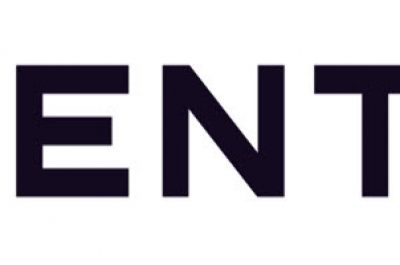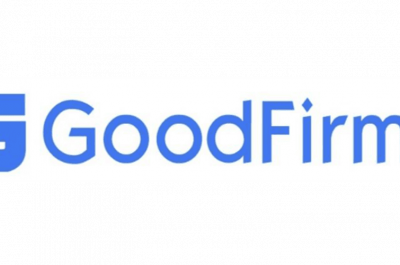The History of SEO
Looking back at the evolution of SEO provides valuable context for understanding current best practices as they apply to SMBs (small-medium sized businesses) and connects the dots as to why things work, prioritizing tasks with high ROI, and helps to blueprint a winning strategy.
As a practitioner since 1997, your author has experienced all of these milestone events from ’97 forward – and I have figured out ways to work with them for the betterment of my businesses and then for my clients – even if first getting stung by trying too hard (hey, it happens).
Join me for a fun walk down memory lane and a look back at the history of SEO!
 1990: Archie, the first internet search engine, goes live
1990: Archie, the first internet search engine, goes live
Context: Archie indexed FTP sites, marking the beginning of searchable online content.
Impact on SMBs: While not directly impactful at the time, this laid the groundwork for future online visibility opportunities for businesses as it introduced a new era of information resources and gathering.
1993: W3Catalog and Aliweb search engine are launched
Context: These were among the earliest web search engines, introducing the concept of indexing web pages.
Impact on SMBs: Forward-thinking small businesses could start considering how to make their websites findable, though the concept was still very new.
1994: WebCrawler search engine is launched
Context: The first full-text web search engine, capable of indexing entire web pages.
Impact on SMBs: This development made it more important for businesses to consider the content of their entire website, not just titles or specific fields.
 1995: Yahoo! Directory and AltaVista search engines are launched
1995: Yahoo! Directory and AltaVista search engines are launched
Context: These became popular ways to find information online, with Yahoo! using a directory structure and AltaVista offering more advanced search capabilities.
Impact on SMBs: Businesses gained more opportunities for online visibility. Getting listed in Yahoo!’s directory became a priority for many SMBs.
1996: Inktomi’s HotBot search engine is launched
Context: Introduced more advanced search capabilities, setting the stage for modern search engines.
Impact on SMBs: Businesses needed to start thinking more strategically about how their websites were structured and what content they included to perform well in these more sophisticated search engines.
1997: Early search engines and keyword-focused SEO
Context: Google.com domain registered; AltaVista introduced “Live Topics”; Ask Jeeves launched; SEO focused on keyword density.
Impact on SMBs: Businesses began recognizing the importance of online visibility, leading to basic SEO practices like keyword stuffing. Multiple search engines provided various avenues for online presence.
Personal note: This is when I shifted from marketing my first business solely from print, email, and fax-blasting (don’t judge, we all did it back then), to the internet. It was a wild and crazy time!
1998: Google’s founding and the rise of structured data
Context: Google officially founded; XML released; Yahoo! acquired Inktomi; Open Directory Project (DMOZ) launched.
Impact on SMBs: Google’s launch signaled a shift towards more sophisticated search algorithms. XML introduced new ways to structure data. DMOZ listings became valuable for SEO, encouraging businesses to seek directory inclusions.
1999: PageRank, the birth of blogging, and Al Gore invents the internet.
Context: Term “blog” coined; Google introduced PageRank; MSN Search launched; “cloaking” became a popular SEO tactic.
Impact on SMBs: Blogging opened new content marketing opportunities. PageRank shifted focus to quality backlinks. Multiple major search engines increased the importance of a comprehensive online strategy. The rise of cloaking highlighted the growing complexity of SEO tactics.
Okay, the U.S. Vice President, Al Gore, did not actually invent the internet, but he gets a lot of press for something he said in an interview that you can read here. It’s somewhat of a fun and baseless SEO lore, enjoy the read!
2000: AdWords, Y2K, and the dot-com bubble
Context: Google AdWords (now called Google Ads) is launched; Y2K terrified the world worse than the Mayan Calendar predicting the end of the world ever could – but did not stop the presses from rolling; dot-com bubble peaked and burst; and Google’s global index reached 1 billion pages. In contrast, it is estimated that, in 2024, there are 4.1 million pages being added to the index each day.
 Impact on SMBs:
Impact on SMBs:
- AdWords offered a new pay-per-click (PPC) online advertising opportunity on the Google search engine and lives on as Google Ads.
- Y2K preparations inadvertently modernized many businesses’ IT systems that were feared to cease working on January 1, 2000, as electronic and computer date systems were only programmed to render a two-digit numerical year. The world worried that energy would shut off, financial markets would crash, missiles would launch (or not), gas pumps wouldn’t work, and media/news communications would stop. Gladly, nothing happened, but if you lived through it – it was a wild night as the world stayed up past midnight just to see if their computers, alarm clocks, watches, VCRs, and cars all worked – as well as if our military missiles were all still in their silos. And yes, the presses kept rolling. It was a wild event!
- Fun Fact: Take a look at The New York Times headline “1/1/00”, which was the Times way of showing both boundless optimism, and utter defiance in the face of the Y2K bug that threatened to stop the presses!
- Dot-com bubble bursting emphasized the need for sustainable online business models.
- Google’s growing index signaled its increasing importance in the search landscape.
2001: Visual search and wiki-based knowledge
Context: Google Image Search introduced; Wikipedia launched; “nofollow” attribute created; Google’s Toolbar PageRank released.
Impact on SMBs:
- Image Search created new optimization avenues for visual products.
- Wikipedia highlighted the importance of comprehensive online information.
- “Nofollow” attribute provided a tool for managing link equity.
- Toolbar PageRank influenced link building strategies by making page authority visible.
2002: Fresh content and algorithm updates begin
Context: Google News launched; Adobe purchased Macromedia (Flash); Google’s “Boston” algo update released at the SES Boston event; “Google bombing” gained attention.
Impact on SMBs:
- Google News emphasized the need for fresh, relevant content.
- Flash offered new design possibilities but posed SEO challenges. Adobe would eventually turn the lights out for Flash in January 2021.
- The “Boston” update marked the beginning of scheduled ongoing algorithm updates.
- Google bombing highlighted the influence and manipulation of anchor text in SEO. The practice is now banned.
2003: Florida update
Context: Google’s first major algorithm update targeting manipulative SEO practices (see above).
Impact on SMBs: Many businesses that relied on keyword stuffing saw their rankings drop dramatically, forcing them to adopt different SEO practices.
2005: Google Inc. acquires Urchin Software Corp. and Google Analytics is born
Context: Google’s acquisition of Urchin led to the launch of Google Analytics later that year, revolutionizing web analytics and reporting up to the current fourth-generation of Google Analytics, aptly named GA4.
Impact on SMBs: Small and medium-sized businesses gained access to powerful, free web analytics tools, allowing them to make data-driven decisions about their online presence and marketing strategies.
Fun Fact: Google left a bit of Urchin around, in that the U in UTM is for Urchin Tracking Modules. UTM’s are special encoded URLs that are used to track online marketing campaigns, and twenty-four years later, they are still going strong! Read Google’s official March 8, 2005, release.
2007: The first iPhone is released – and changes how we interact with the internet forever!
2008: Google Suggest launched
Context: This feature (now Google Autocomplete) suggests search queries as users’ type.
Impact on SMBs: It became easier for businesses to identify popular search terms related to their products or services, improving keyword research and content strategy.
2010: Page speed becomes a ranking factor
Context: Google started considering website loading speed in its ranking algorithm.
Impact on SMBs: SMBs needed to invest in optimizing their website performance to maintain or improve rankings.
2011: Panda update
Context: This update targeted website pages with low-quality and thin content. Thin content at that time was defined by Google as having fewer than 300 words (simplified explanation).
Impact on SMBs: Businesses had to focus on creating high-quality, original content of meaningful length to maintain rankings and avoid penalties.
2012: Penguin update
Context: This update penalized websites with manipulative link profiles.
Impact on SMBs: SMBs had to audit their backlink profiles and focus on natural link building strategies.
2013: Hummingbird update
Context: This update improved Google’s understanding of search intent and conversational queries.
Impact on SMBs: Businesses needed to focus on creating content that answered user questions and addressed search intent, rather than just targeting specific keywords. Websites that told visitors what the business did or offered without providing meaningful information and value were some of the hardest hit.
2015: Mobile-friendly update and RankBrain
Context: Google started prioritizing mobile-friendly websites and introduced machine learning (AI) into its ranking algorithm.
Impact on SMBs: SMBs had to ensure their websites were mobile-responsive and focus on creating content that satisfied user intent to perform well in search results.
2016: Possum update
Context: This update affected local SEO, diversifying local search results.
Impact on SMBs: Local businesses had to optimize their Google My Business listings and focus on local SEO strategies to improve visibility in local search results.
2018: Mobile-first indexing begins
Context: Google started using the mobile version of websites for indexing and ranking.
Impact on SMBs: Businesses had to ensure their mobile sites contained the same content and structured data as their desktop versions.
2019: BERT update
Context: This is another AI update that improved Google’s understanding of natural language processing.
Impact on SMBs: Businesses needed to focus on creating content that addressed user intent and answered specific questions naturally.

2021: Page Experience update and Core Web Vitals
Context: Google introduced new metrics to measure user experience on websites.
Impact on SMBs: SMBs had to optimize their websites for Core Web Vitals (loading speed, interactivity, and visual stability) to maintain or improve rankings.
2022: E-E-A-T (Experience added to E-A-T)
Context: Google expanded its quality guidelines to include “Experience” alongside Expertise, Authoritativeness, and Trustworthiness.
Impact on SMBs: Businesses needed to demonstrate first-hand experience in their content and showcase the expertise of their content creators.
2023: Helpful Content Update and AI-generated content guidelines
Context: Google refined its algorithms to prioritize helpful, human-first content and provided guidelines on AI-generated content.
Impact on SMBs: Businesses had to focus on creating high-quality, original content that genuinely helps users. They also needed to be transparent about their use of AI in content creation and ensure AI-generated content was reviewed and edited by humans.
2024: The book is being written! Subscribe to our blog for annual updates to this article.
The Wrapper
As we look back on how far SEO has advanced – from the days of keyword stuffing and link farms to today’s sophisticated, user-centric and highly technical approach – we can only imagine how it will continue to evolve. One thing is certain: the fundamental goal of connecting users with the most relevant, high-quality content will remain at the heart of SEO for years to come.
In our experience, the majority of websites today are not well optimized. Implementing these tips and staying on top of the latest developments in SEO will help you stand out from the competition, increase market share, and bring in new leads and revenue. Just remember, SEO is an ever-evolving field, so it’s crucial to stay updated with the latest trends and algorithm changes that matter most to your business.
About the Author: Chris Sheehy is the Digital Services Director at Brave River Solutions, a Rhode Island-based technology agency providing Search Engine Optimization (SEO), digital marketing, and digital advertising (PPC). Chris has been working in the industry since 1997 and has received much acclaim, publishing’s, and recognition in his career.




